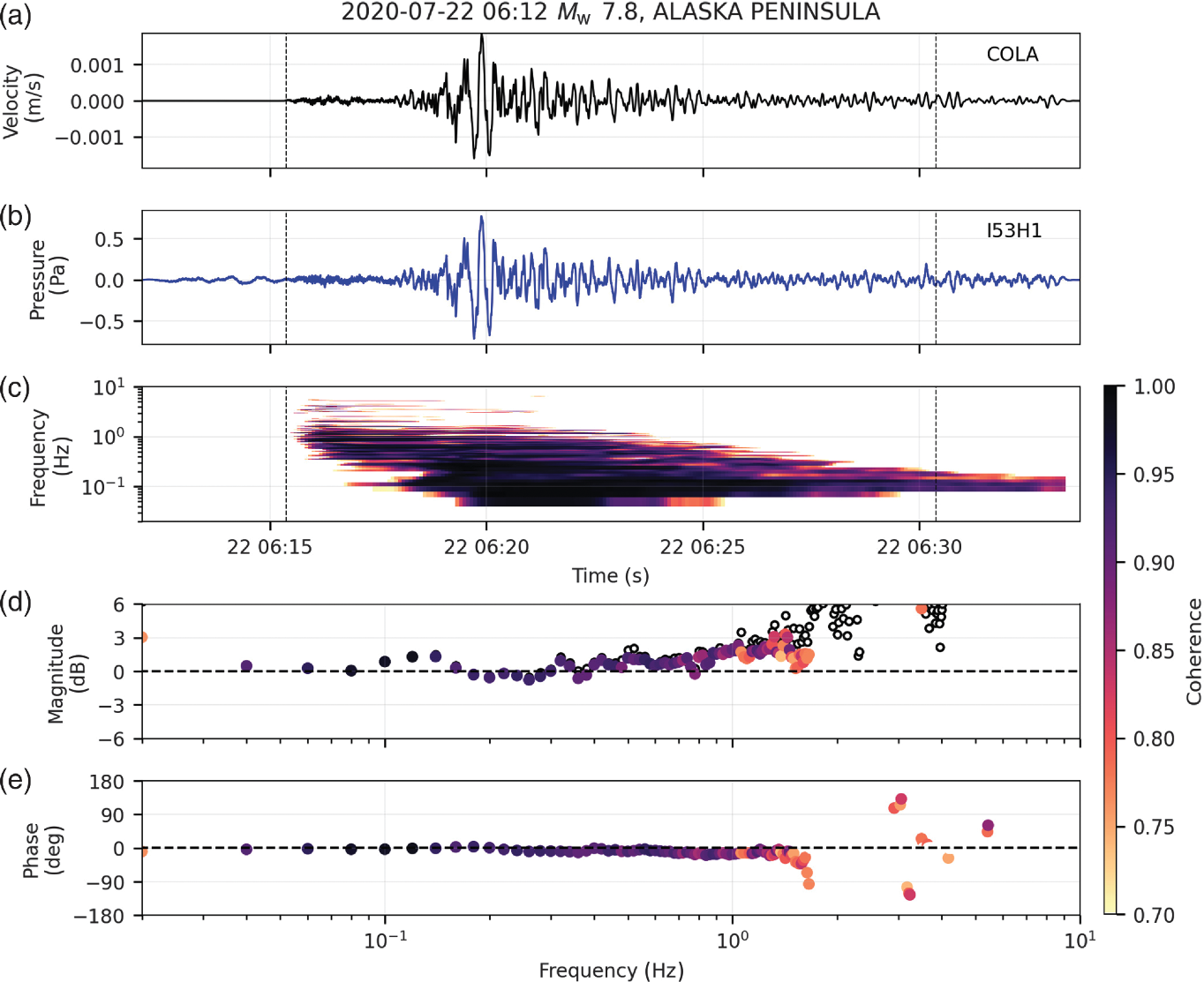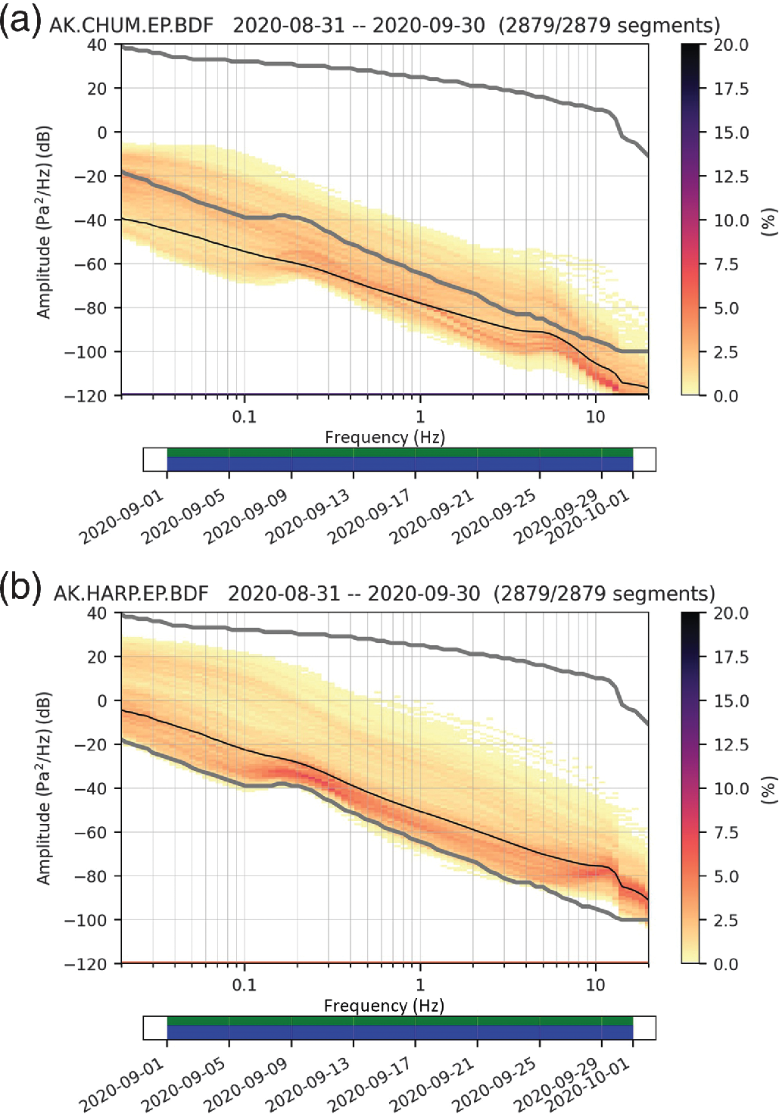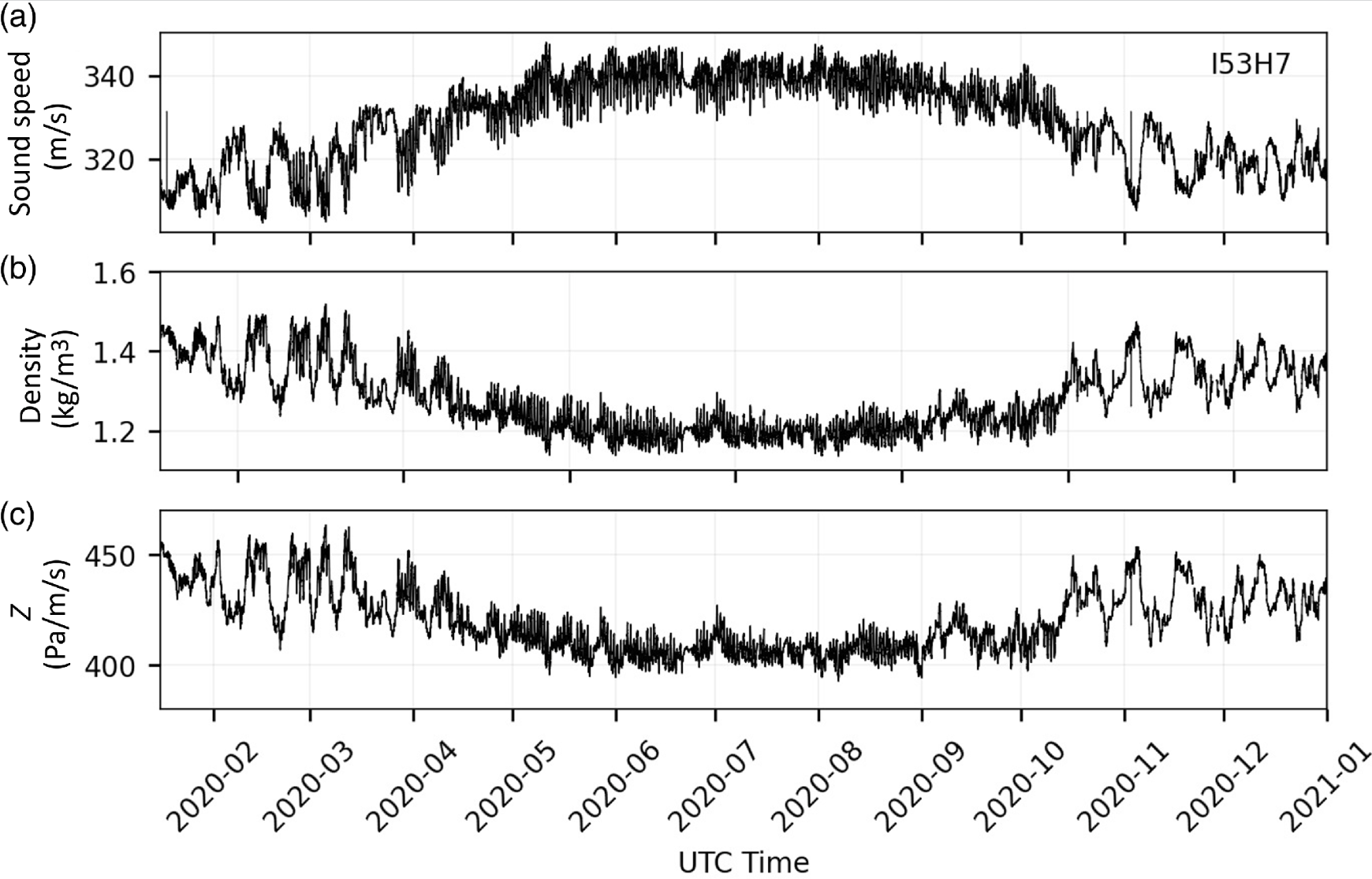Earthquakes generate infrasound in multiple ways. Acoustic coupling at the surface from vertical seismic velocity, termed local infrasound, is often recorded by infrasound sensors but has seen relatively little study. Over 140 infrasound stations have recently been deployed in Alaska. Most of these stations have single sensors, rather than arrays, and were originally installed as part of the EarthScope Transportable Array. The single sensor nature, paucity of ground‐truth signals, and remoteness makes evaluating their data quality and utility challenging. In addition, despite notable recent advances, infrasound calibration and frequency response evaluation remains challenging, particularly for large networks and retrospective analysis of sensors already installed. Here, we examine local seismoacoustic coupling on colocated seismic and infrasound stations in Alaska. Numerous large earthquakes across the region in recent years generated considerable vertical seismic velocity and local infrasound that were recorded on colocated sensors. We build on previous work and evaluate the full infrasound station frequency response using seismoacoustic coupled waves. By employing targeted signal processing techniques, we show that a single seismometer may be sufficient for characterizing the response of an entire nearby infrasound array. We find that good low frequency (<1 Hz) infrasound station response estimates can be derived from large (Mw>7) earthquakes out to at least 1500 km. High infrasound noise levels at some stations and seismic‐wave energy focused at low frequencies limit our response estimates. The response of multiple stations in Alaska is found to differ considerably from their metadata and are related to improper installation and erroneous metadata. Our method provides a robust way to remotely examine infrasound station frequency response and examine seismoacoustic coupling, which is being increasingly used in airborne infrasound observations, earthquake magnitude estimation, and other applications.
David Fee (1), Kenneth Macpherson (1), and Thomas Gabrielson (2)
1. Wilson Alaska Technical Center, University of Alaska Fairbanks
2. Graduate Program in Acoustics, Penn State University, State College, PA, USA


